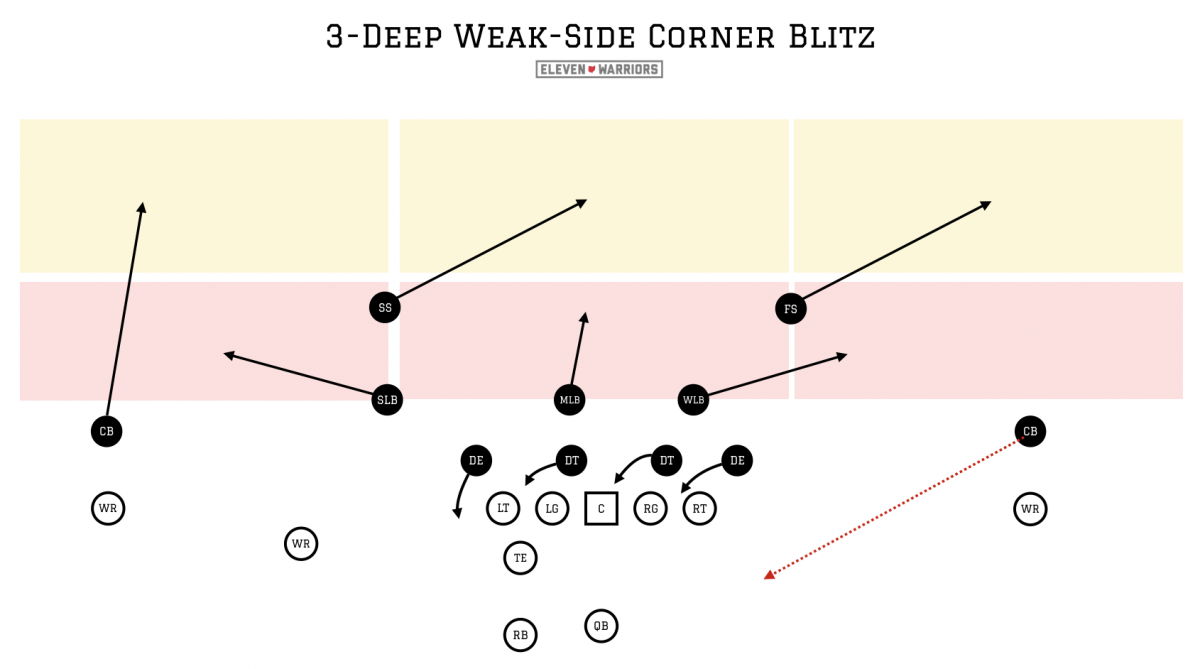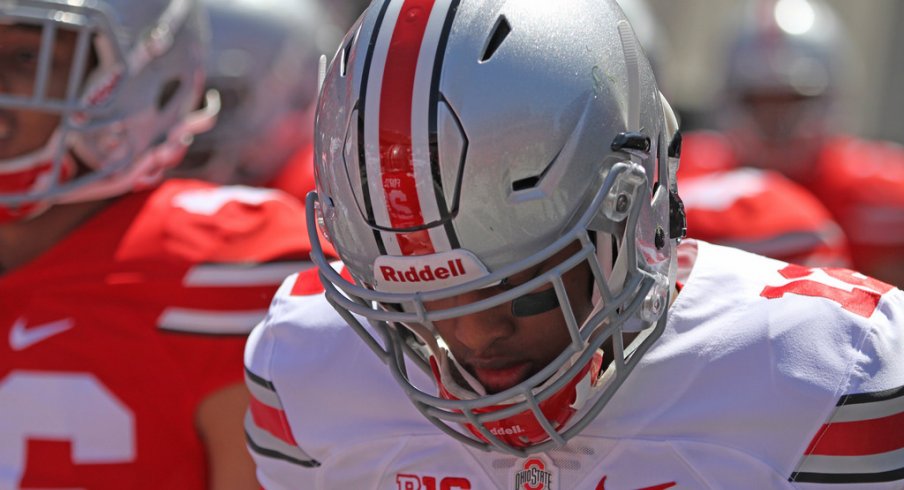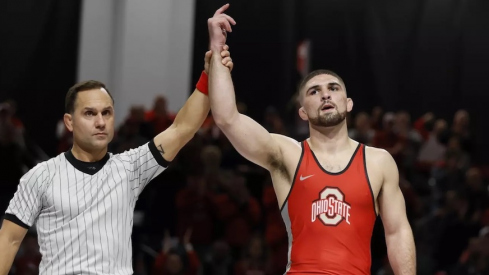Rarely do spring games offer much in the way of advanced game planning, and most of the 2016 matchup between Scarlet & Gray in Ohio Stadium was no exception.
With J.T. Barrett acting as the only returning starter on the Buckeye offense to see much playing time, the event was dictated far more by effort and execution than scheme. Many new faces on both sides of the ball saw time with the starting units for their first time in front of 100,000 fans, leading Urban Meyer and his staff to mostly call plays that have long made up the core of their playbooks.
Offensively, we saw lots of Tight Zone and Power-O inside runs, some Jet-Sweeps on the outside, and a handful of option reads thrown in as well. In the passing game, there were a number of throws to tight end Marcus Baugh on stick routes, along with some throws to the young wide receivers on packaged run-pass options. Some other concepts were also included, especially in the passing game, but these play-calls made up the majority of the game plans for both the Scarlet and Gray squads.
Defensively, the Silver Bullets on both teams played with the same 'Cover 4' shell we've seen over the past two years under former coordinator Chris Ash, showing the Buckeyes have little intention of abandoning the philosophy he taught anytime soon. In addition to the base, 'Quarters' coverage, the OSU secondary also ran quite a bit of Cover 3 'Buzz' coverage, with a safety covering an underneath zone inside next to the middle linebacker.
After showing quite a bit of this three-deep look early, Ash's replacement, Greg Schiano, made his presence felt in the Horseshoe for the first time. As the Gray offense lined up in a 3x1 formation with the lone receiver to the short (boundary) side of the field, quarterback Joe Burrow saw pressure from his left and had to force a quick throw out to avoid a big hit.

To the untrained eye, this may have appeared as just another missed assignment along the OSU offensive line, a unit that was dominated all day by their relatively veteran counterparts along the defensive line. But in this instance, the 'slobs' protecting their QB weren't necessarily to blame.
Schiano's secondary on both teams had included a wrinkle that brought the weak-side cornerback, Damon Arnette, on a blitz while the defense slanted away from his pressure and forcing the offensive linemen to step away from the additional rusher. With the running back lined up on the strong side of the formation as well, no one was there to block Arnette.
To make this concept work, the free safety slides over behind the blitzing corner to cover a deep-third zone, and is effectively placed in solo coverage against that lone wide receiver. In the clip above, we see safety Eric Glover-Williams (#19) close quickly on the receiver and break up the play.

Over the course of the game, this same blitz would be called at least a half-dozen times, often with big results. Sophomore Denzel Ward (#12) made the most of his opportunities when doing so, lining up Barrett for what would've been a huge hit had the quarterback been allowed to see contact.

Ward was highlighted multiple times by the Big Ten Network broadcast team for his excellent play during the game, but for a player looking to win a starting spot opposite Gareon Conley in the fall, this addition to the playbook should be welcomed with open arms. Ward's excellent closing speed got him to Barrett as the QB was finishing his fake handoff and just setting up to throw, meaning he likely never would have even gotten the ball off had the play been fully live.

This blitz package is far from unique or even new, and many of the current Buckeyes asked to execute it likely did so in their high school careers. But to dismiss the concept for it's simplicity would be missing the larger context.
During Ash's two seasons in Columbus, his cornerbacks were rarely tasked with creating pressure on opposing quarterbacks. With the exception of a Gareon Conley half-sack during last year's Virginia Tech game in which the quarterback was taken down after a long scramble (and without a blitz), no Buckeye corner has recorded a sack since Bradley Roby did in 2012.
There is of course a potential downside to this approach. With eight new starters on defense, including three in the secondary, complication can only come once the base coverages have been mastered. If not, we'll see a grab-bag approach to scheme that leads to breakdowns, much like what happened in 2013.
Though Schiano has shown deference to his predecessor by keeping the existing system in place, he and fellow coordinator Luke Fickell have quickly shown that they plan on adding to it. Fickell has always included a number of blitz packages that include all three linebackers, but the inclusion of defensive backs in the equation opens up many more doors.
If the leaders of the Silver Bullets are willing to include a corner blitz as a simple addition to their game plans during a glorified scrimmage, the sky is the limit for the number of wrinkles we might see once they have real opponents to combat. Schiano has shown that such concepts should be expected early and often once the regular season kicks off in September.


